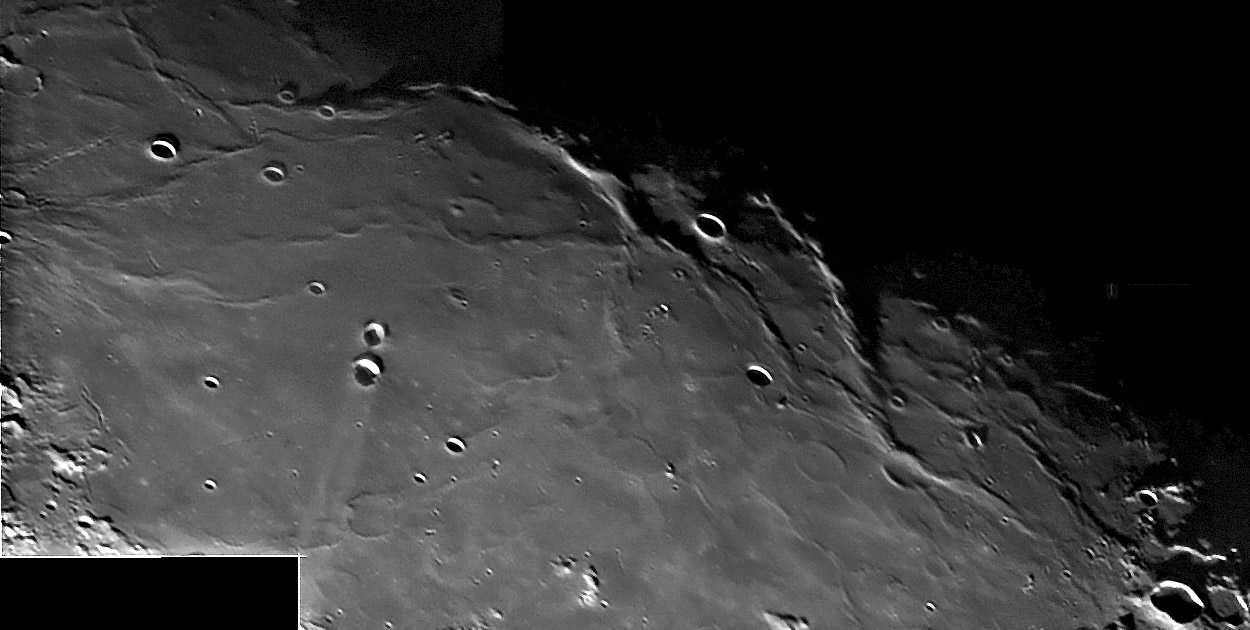Difference between revisions of "July 30, 2011"
| Line 24: | Line 24: | ||
<br /> | <br /> | ||
<strong>Related Links</strong><br /> | <strong>Related Links</strong><br /> | ||
| − | Rükl plate [https://the-moon.us/wiki/R%C3% | + | Rükl plate [https://the-moon.us/wiki/R%C3%BCkl_48 48]<br /> |
<br /> | <br /> | ||
<hr /> | <hr /> | ||
Latest revision as of 17:49, 13 October 2018
Endless Moons

image by Daniel Chang, Hong Kong
There are many Moons to observe. No one night, no matter how superb, will reveal all the Moon has to offer.
We have to keep looking beyond the obvious. For example, many times I've looked at Mare Fecunditatits,
usually not getting beyond marveling at the Messier twins, their railway track rays to the west, and opposing
- and nearly invisible here - faint butterfly wing rays to the north and south. But as Daniel's low Sun view
illustrates there are many other pieces of history to undercover. The largest structures are the mare ridges
that may trace an inner ring of a hardly visible Fecunditatis basin - did one eactually exist there? Three or four
smaller mare rings near the left margin probably mark earlier impact craters that were inundated by mare lavas.
And the nearby rimless crater is either a volcanic collapse strucutre or an impact crater buried by lavas up to
its rim. Which was it? Finally, at far left observe the ridges apparently radiating from Taruntius. Mare ridges
normally aren't related to impact craters - is this a coincidence?
Chuck Wood
Technical Details
2010-06-29, 18:42 UT. Mewlon 180 f/30 + DBK; 4 frames mosaic.
Related Links
Rükl plate 48
Yesterday's LPOD: Truncated
Tomorrow's LPOD: Limb Basins
COMMENTS?
Register, Log in, and join in the comments.



